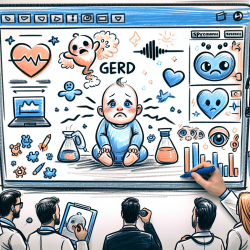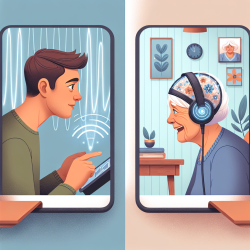Introduction
Gastroesophageal reflux disease (GERD) is a condition that can have serious implications for infants, as demonstrated in the case study of a one-week-old Amish female who presented with severe symptoms such as cyanosis and respiratory distress. This blog aims to guide practitioners in recognizing and managing GERD in infants, based on the findings from the research article titled "Gastroesophageal Reflux Disease in a One-Week-Old Infant Presenting With Cyanosis and Respiratory Distress."
Understanding GERD in Infants
GERD in infants is characterized by symptoms that go beyond the common gastroesophageal reflux (GER), which is considered physiological. GERD can lead to more severe complications such as apnea, aspiration pneumonia, and failure to thrive. This case study highlights the importance of distinguishing between GER and GERD to prevent severe outcomes.
Case Study Insights
The case study presented in the research article involves a one-week-old infant with no prenatal care, who exhibited symptoms such as hypoxemia, tachypnea, and cyanosis. Initial assessments ruled out other common causes of respiratory distress, leading to a diagnosis of aspiration pneumonitis due to GERD and oropharyngeal dysphagia.
Key findings from the case study include:
- GERD can manifest as respiratory distress and cyanosis in infants.
- Timely diagnosis and intervention are crucial to prevent complications.
- Thickened feeds were effective in managing the infant's reflux symptoms.
Implications for Practitioners
Practitioners should consider GERD as a potential cause of respiratory distress in infants once other common etiologies have been excluded. The case study underscores the importance of a comprehensive evaluation, including:
- Clinical observation of feeding sessions.
- Video-fluoroscopic swallow studies or modified barium swallow tests.
- Collaboration with speech-language pathologists for swallowing assessments.
Encouraging Further Research
While this case provides valuable insights, further research is needed to better understand the prevalence and management of GERD in infants. Practitioners are encouraged to stay informed about the latest research and consider participating in studies that explore innovative diagnostic and treatment approaches.
Conclusion
GERD in infants is a serious condition that requires careful attention and management. By understanding the symptoms and employing a multidisciplinary approach, practitioners can improve outcomes for affected infants. For a more detailed understanding, practitioners are encouraged to read the original research paper.
To read the original research paper, please follow this link: Gastroesophageal Reflux Disease in a One-Week-Old Infant Presenting With Cyanosis and Respiratory Distress.










